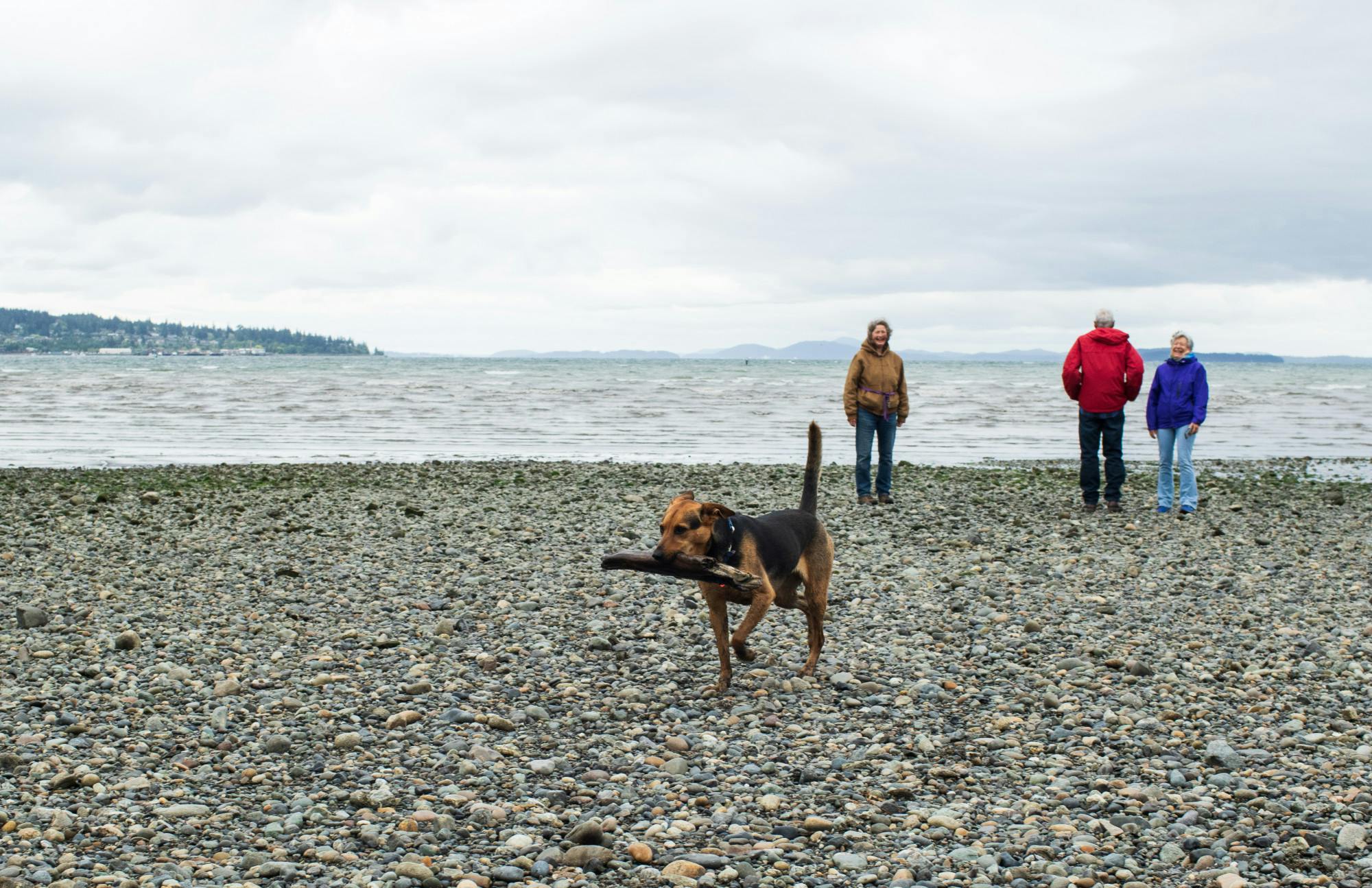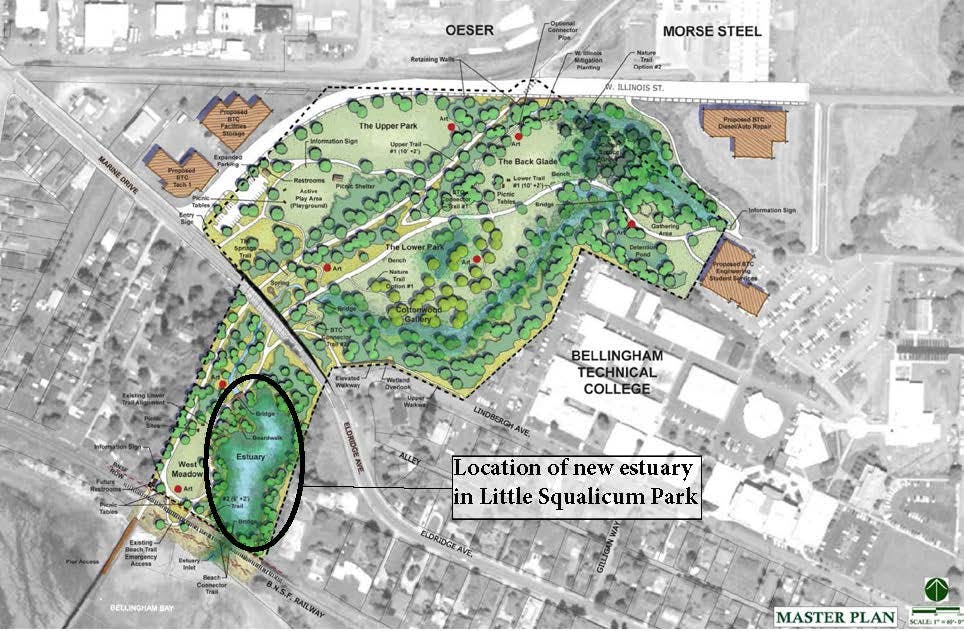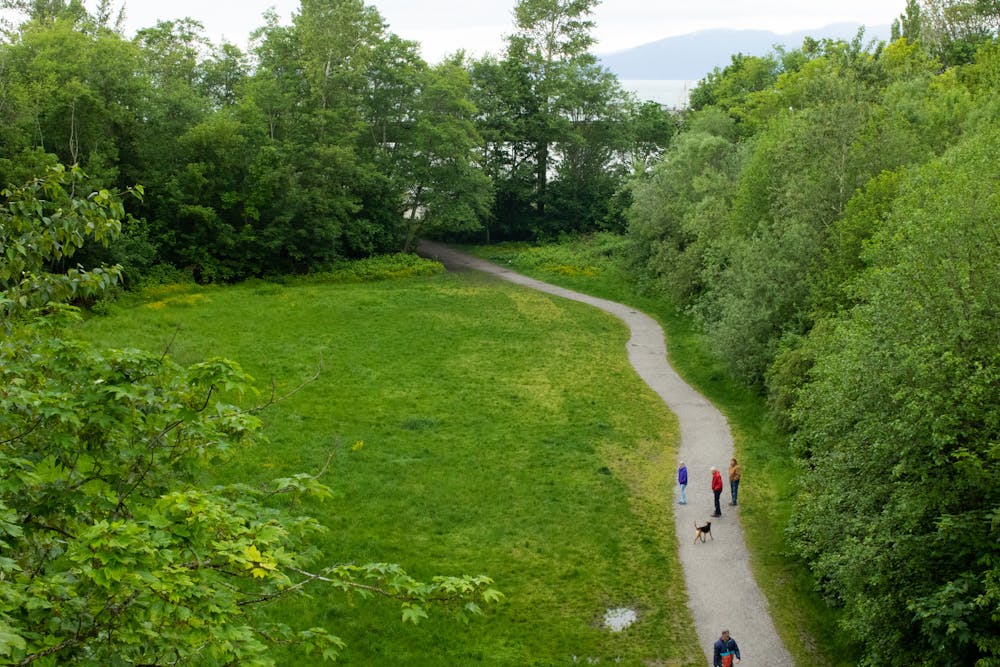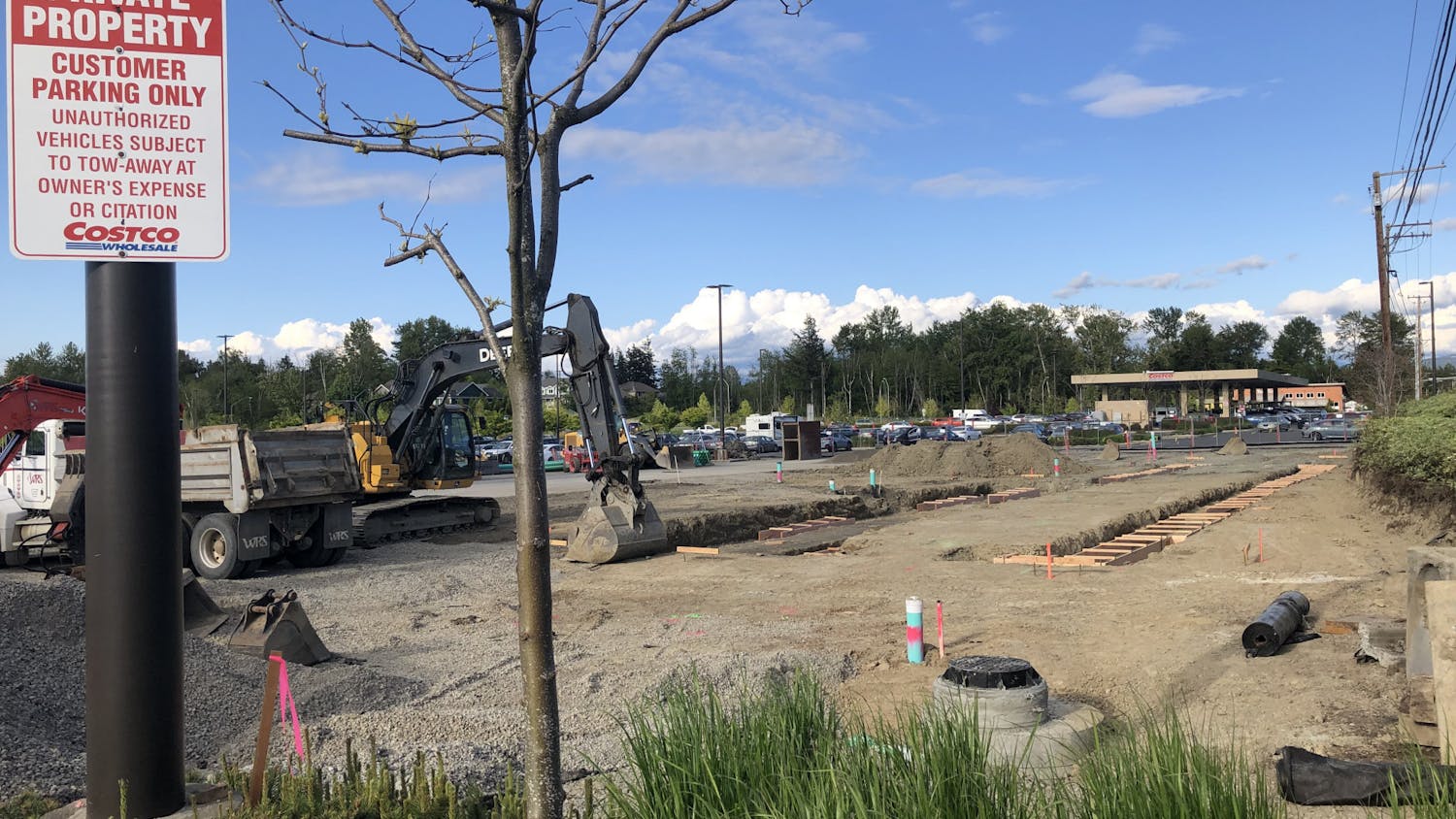Little Squalicum Park, located next to Bellingham Technical College, a haven for dog walkers, will soon welcome back its native marine ancestors.
The lower part of the park will be closed through December 2022 for the construction of an estuary and beach restoration project that will restore 4.85 total acres of “essential” coastal habitat that has been lost to development, according to the project’s summary.
Estuaries are vital to local salmon because they provide a protected area for juvenile salmon to be safe from predators and feed as they reach adulthood. Salish Sea Chinook salmon abundance has decreased by 60% from 1984 numbers, according to the Pacific Salmon Commission.
“[Salmon] spend time in the estuary, growing, acclimating and adapting to the saltwater, they get food and get protection there until they’re big enough to go out into the open water,” said John Rybczyk, an Environmental Science Professor at Western Washington University who specializes in estuarine ecology.
Without the protection of estuary systems, small organisms don’t survive long in the open sea, Rybczyk said. The Nooksack River delta dwarfs this restoration area, but salmonids coming out of the Nooksack are likely to migrate to the new Squalicum Creek estuary to finish growing or seek refuge.
As sea levels rise due to climate change, natural systems like estuaries have built-in capabilities to manage sea-level rise to a certain extent, Rybczyk said.
“It's going to be more and more important that we need to think about how we're going to manage these coastal systems and one of the best ways that we can do it is to [restore] them to what they were before: a naturally resilient coastal system,” he said.

Honey carries a stick on the Little Squalicum Park beach that her owner, Mattie Wheeler (left), threw for her. Wheeler said her dog will have a “heart attack” when they lose beach access at the park for the next few months. // Photo by Andrew Ford
Rybczyk said most often the construction of an estuary is the easy part, but the difficulty is finding the land and having support from landowners and stakeholders. In this case, Rybczyk said this project is capitalizing on “low-hanging fruit” because the park is already well set up to provide an estuary because it’s one of the last flat, mostly undeveloped lands on Bellingham’s coastline.
Analiese Burns, the habitat and restoration manager for this project, said that construction along shorelines requires extra care and attention to timing. The goal is to not impact the fish using the existing habitat and being conscious of cultural sites of past indigenous use.
The location has four landowners, and getting all of the permissions in place to execute the project was a lengthy process, Burns said.
It took 13 years for the project’s funding package to come together supported by five different state grant programs and funding from the Port of Bellingham, Whatcom County, Nooksack Salmon Enhancement Association, Greenways Levy and the City of Bellingham.
Prior to industrial development, much of Bellingham’s coastline was estuary. Over the past 150 years, 282 acres of Bellingham Bay’s coastal habitat have been lost as a result of dredging and filling to create dikes, levees and shoreline modification (fortifying or extending for industry).
According to the WRIA 1 Nearshore and Estuarine Assessment and Restoration Plan, Little Squalicum was identified as one of the last remaining locations available for estuary habitat expansion.
“We don't have any other opportunity like this in Bellingham Bay to create a brand new estuary and expand habitat for juvenile Chinook [Salmon],” Burns said.

An illustrated map of the intended outcome of construction from the Little Squalicum Park Master Plan that was created in 2010. // Photo courtesy of City of Bellingham
Being one of the only coastal sites where the BNSF railroad is above grade and elevated, Burns pointed out the rarity and unique position the park is in to house the estuary.
The excavation for the estuary will remove 8,000 cubic yards of material that was contaminated by diesel during historic industrial use of the land and will be disposed of in appropriate ways. Native vegetation will be planted in the surroundings of the 2.4-acre estuary to help cool and filter water as it enters the bay according to the project plans.
A volunteer work party will be hosted in January 2023 for those who want to help restore the native vegetation once the estuary is constructed.
The park is home to many dog owners’ number one spots in town to let their dogs expend some energy. Christine Zimmerman, a community member, said Little Squalicum Park has been her favorite place to walk her dogs, Baker and Roux, for the past 2.5 years.
“This is the closest and the most convenient and hits everyone’s needs,” she said.
The city is asking the public to help steward the sensitive estuary and vegetation in the future by staying on designated trails and guiding pets to do the same when walking around the protected area. The park will still be an off-leash designated park once the project is complete and the estuary will be protected by a low fence.
Land and homeowners nearby will also directly affect the water quality of the estuary based on their lawn care. Picking up dog waste and taking measures to prevent fertilizers and chemicals from entering storm drains will be important to the health of the estuary, Burns said.
Andrew Ford (he/him) is a reporter for The Front working on local environmental and social justice stories. He likes spending time outdoors, biking, and taking photos.
You can reach him at andrewford.thefront@gmail.com.






